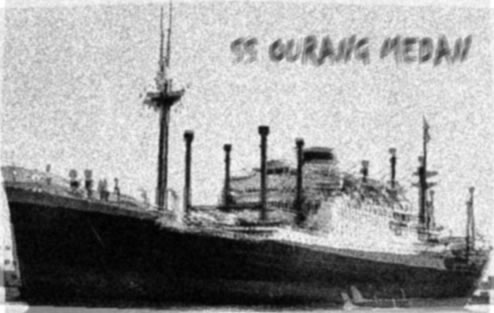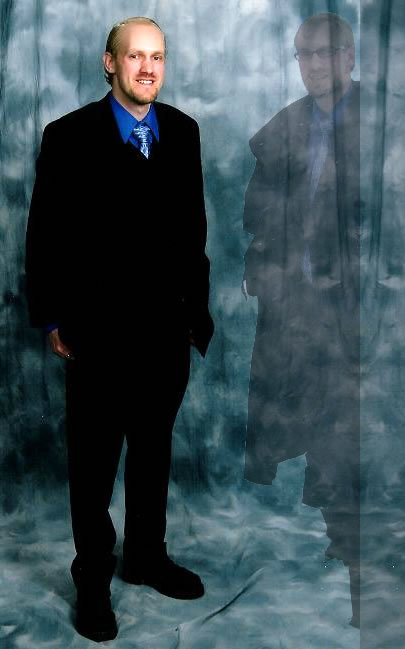Uncategorized
SS Ourang Medan
SS Ourang Medan
Continuing with mysteries that have influenced my writings, today we discover that the sea can hold more secrets than we can imagine. Join along as we look at the events of a ghost ship that still baffles historians and nautical investigators to this day:
In June of 1947, a distress signal in the Strait of Malacca came from the Dutch Merchant Ship, the SS Ourang Medan. The Morse code message went as follows: “…we float. All officers including the Captain, dead in chartroom and on the bridge. Probably whole crew dead…” Following a confused series of dots and dashes, two chilling words were understood, “I die.” There was nothing more. No more communications with the doomed ship.
The unsettling, cryptic distress call was picked up by two American ships, the Silver Star and the City of Baltimore, along with Dutch and British listening posts. The listeners quickly triangulated the broadcast and narrowed down the likely location. The Silver Star, being the closest ship, was dispatched, changing her course to locate the distressed ship. After a search of the area, the Silver Star located the seemingly undamaged SS Ourang Medan, which was bobbing in and out of sight on the choppy waters of the Malaccan Strait.
When the crew boarded the ship, they were not prepared for the living horror story they were about to enter: the deck of the ship was littered with rapidly deteriorating corpses. Even the corpse of a dog was found. The condition in which the bodies were found were even more disturbing, all sprawled on their backs, faces frozen with a look of terror, mouths open wide, gaping, and eyes staring. All the bodies had their arms outstretched in front of them. One crewmember of the Silver Star described the dead bodies as resembling horrible caricatures.
An extensive search of the ship was to be conducted, as there was no signs of survivors anywhere, but as the Silver Star’s crew was beginning to organize the search effort, a fire broke out in the ship’s Number 4 cargo hold, forcing the boarding party to evacuate the ship. The fire quickly spread, igniting something highly combustible in the hold, causing a massive explosion which sank the SS Ourang Medan before a formal and extensive investigation could be completed.
There are as many theories as to what happened to the SS Ourang Medan as there are unanswered questions about the case. The main question of what happened opens the door to a plethora of other questions, who sent the signal if everyone was already dead or dying instead of trying to get off the ship? Why was everyone frozen with a look of fear on their faces? What were their arms reaching for?
Since we don’t have the autopsies of the bodies, or even photographic evidence to go off of, we can only rely on the story of the rescuers and their eyewitness accounts. We need to investigate the history of the SS Ourang Medan and see what the ship did in the past…and that’s where we run into problems. There is no nautical record of a ship named the SS Ourang Medan.
That doesn’t mean that we throw the entire story out as being a hoax, Ghost Ships have a long history on the seas, and depending on the nature of the cargo and the merits of the captain and crew, some prefer to remain anonymous from the taxation and shipping records that legit ships follow.
The most prevalent theory is that the SS Ourang Median was carrying toxic chemicals…possibly smuggled out of Japan during the war and stored in China. The story goes, the Japanese had a stock supply of nerve gas that they were going to use in World War II but the tide of the war had shifted before they had their opportunity. Knowing what using the gas and then being defeated would do, the Japanese smuggled the gas to China, who then turned it over to America after the war.
The American Military couldn’t ship the gas on any transport that would have its cargo reported on shipping manifests, and the risk of carrying it on a military ship that could be attacked or captured was too great so they contracted with mercenary shippers to transport the cargo to a military base. Most mercenary ships handle their own security in very effective ways so capture or destruction wasn’t a concern.
What should have been more of a concern would be the safe and secure handling of poison gases. If the handlers weren’t being careful with the cargo, if it wasn’t secured correctly on the ship, if the gas got out, there would have been nothing that could have saved the crew on that ship. As for the fire, if the gas was corrosive, it could have eaten through the hull, reacted to saltwater, and started a fire which caused the ship’s boilers to blow. If the cargo was something along the lines of a potassium cyanide or nitroglycerine, both would become dangerously reactive when combined with sea water.
This theory seems highly plausible. It accounts for almost all the strangeness of the incident, including the reason for the horrified looks on the faces of the men. A nerve gas would surely kill in a horrific way, not a simple, pleasant, falling asleep and passing quietly in the night death.
Another simpler theory is that whatever the ship was carrying, dangerous or benign, stolen or legit, it was the boilers of the ship that malfunctioned causing carbon monoxide poisoning to kill the members of the crew before igniting the fire that sunk the ship. The horrified looks could have been an overstatement from the rescue crew or it could have been from the poisoning itself. The main question for both of these theories is who sent the message and how were they able to survive the death on the ship long enough to get the message out?
Venturing further into the unexplained, Ghost Ships on the water have been sighted since our ancestors first looked out onto the seas. Vanishing ships, ships sunk long ago, and ships that appear on no radar or satellite images have been reported throughout history.
The main question that needs to be asked is if all that facts of the story are straight. We are told that the ship’s name was the SS Ourang Medan, which in Malay or Indonesian is Man, so the name of the ship translates to ‘Man from Medan.’ Medan is a city on the island of Sumatra not far from where the incident was alleged to have taken place. If the name of the actual ship was corrupted with individuals involved, then no serious discoveries could take place. Luckily, others have researched this ghost ship heavily.
One account of the ship appeared in the May, 1952 copy of the “Proceedings of the Merchant Marine Council,” which was published by the United States Coast Guard. The testimony therein described the alarming state of the Dutch Crewmen and the events surround the ship.
Author and Historian Roy Bainton has done some of the most extensive and exhaustive work on the investigation of the SS Ourang Medan. He met with dead end after dead end as he explored all the normal avenues of tracking down ocean-going vessels, finding nothing in Lloyd’s Shipping Registers, the Dictionary of Disasters at Sea, 1824-1962, the Dutch Shipping Records in Amsterdam, or the Maritime Authority in Singapore. Bainton was about to write the entire incident off as a hoax but he was contacted by someone who claimed to have information about the case.
Professor Theodor Siersdorfer, of Essen, Germany, had also been pursuing the case for the better part of fifty years and was the person to reveal the names of the two American Ships that heard the SS Ourang Medan’s cries for help. Siersdorfer showed Bainton a German Booklet written by Otto Mielke in 1954 with a translated title of, “Death Ship in South Sea.” The booklet contained details about the SS Ourang Medan’s route, engine power, and supposedly, the Captain’s name. The booklet also revealed the date, 1947, for when the disaster took place.
The story of the SS Ourang Medan also appeared three times in a Dutch-Indonesian newspaper, “De Locomotief.” (February 3rd, 1948, February 28th, 1948, and March 13th, 1948.) The second and third articles contain the descriptions and experiences of the sole survivor of the SS Ourang Medan crew, a man who was discovered by missionaries and natives in the Marshall Islands. The man tells a tale of the crew carrying sulfuric acid that was badly stowed in the cargo hold, hold number 4, and the crew perished because of the gases from the broken containers. According to the unnamed German survivor, the SS Ourang Medan was sailing from a small Chinese port to Costa Rica and intentionally avoiding the authorities. The man died shortly after telling the story.
The truth to this story has been lost like so many other truths, to the bottom of the sea. We might never know what actually happened to the SS Ourang Medan, what she was carrying, or why she sank, but there is enough clues to form theories as to what happened. In this modern day and age we don’t give a second thought to ships on the sea, or closer to home for most of us, semi-trucks on the highway. There are strict shipping and handling regulations in place to keep everyone one safe. As long as those regulations are adhered to, we should have nothing to worry about. But when someone wants to make a quick buck, or decides to transport cargo without the proper safety measures, that’s when we need to be careful or we might witness another incident like the SS Ourang Medan.
To see how the incident of the SS Ourang Medan and other ghostly ships on the ocean have influenced my writing, head over to www.leifericksonwriting.com and buy my books today.
We Sail together”. Proceedings of the Merchant Marine Council (U.S. Coast Guard) 9 (5): 107. May 1952.
Raybin Emert, Phyllis (1990). Mysteries of Ships and Planes. Tom Doherty Associates, Inc., New York. ISBN 0-8125-9427-4.
Winer, Richard (2000). Ghost Ships. Berkley. ISBN 0-425-17548-0.


























Leave a reply
You must be logged in to post a comment.